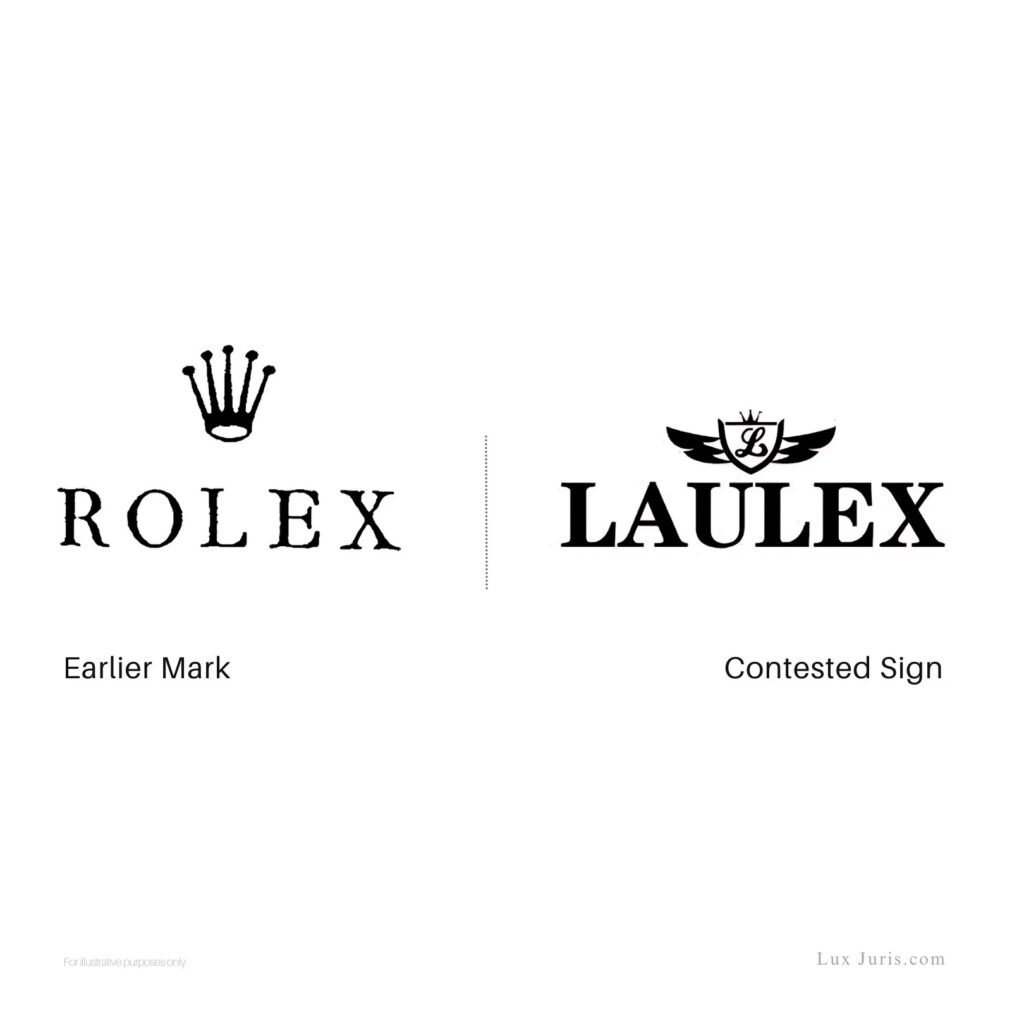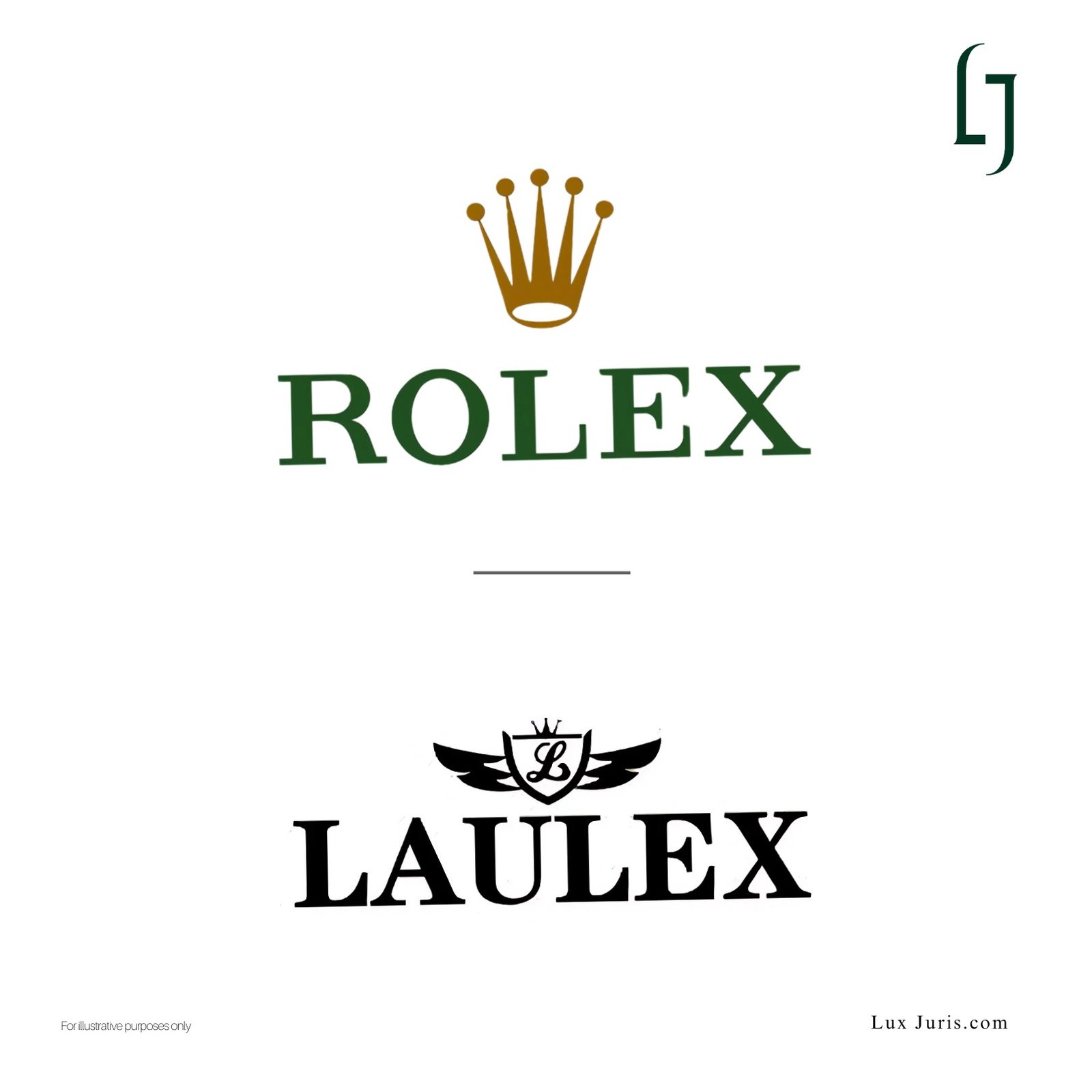On 7 February 2025, the EUIPO Opposition Division upheld an opposition filed by Rolex S.A. against a figurative European Union trade mark (EUTM) application for “Laulex”, rejecting the application in its entirety under Article 8(5) EUTMR. This decision confirms the strength of reputation-based protection within EU trade mark law and illustrates the threshold at which association, rather than confusion, may trigger legal consequences.
Grounds for the Opposition
Rolex relied on an earlier figurative mark consisting of the word “ROLEX” beneath a stylised crown. The opposition was filed under both Article 8(1)(b), concerning the likelihood of confusion, and Article 8(5), which protects reputed marks from signs that take unfair advantage of, or are detrimental to, their distinctive character or repute. For procedural efficiency, the EUIPO assessed the claim under Article 8(5) only.
Evidence of Reputation
To demonstrate reputation, Rolex submitted a substantial body of evidence. This included historical and recent advertising in high-profile European publications such as Vogue, Financial Times, Le Figaro, and The Economist, as well as brand rankings, sponsorship records, invoices, and independent press coverage.
Surveys conducted in Member States including Germany, Denmark, Italy and Poland showed high levels of brand recognition, ranging from 60 to 97 percent depending on the jurisdiction and respondent group. The EUIPO concluded that the mark had acquired a strong reputation in the European Union for watches and wristwatches, particularly in key markets such as Germany, France, Italy and Spain.
The Office confirmed that even though part of the evidence dated back more than a decade, Rolex’s continued advertising presence and market activity supported the view that its reputation remained current and commercially relevant.
Comparison of the Signs

The marks shared some visual and conceptual similarities. Both included the letters “LEX” and a crown device. However, differences such as the prefixes “RO” and “LAU”, along with the stylisation of the contested sign, created some degree of distinction. Despite this, the EUIPO found that these differences did not eliminate the potential for mental association.
The Office emphasised that when trade marks include both word and figurative elements, the word element generally has a greater influence on consumer perception. In this case, “ROLEX” and “LAULEX” were sufficiently close for consumers to associate one with the other, particularly considering the identity or close similarity of the goods covered.
Association and Unfair Advantage
A finding under Article 8(5) does not require a likelihood of confusion. The relevant test is whether the public would associate the contested sign with the earlier mark, and whether that association would lead to one of the forms of injury identified in the provision.
In this case, the EUIPO found that the combination of Rolex’s strong reputation, the overlap in goods and the shared visual features created a clear risk of association. The contested sign was likely to benefit from the recognition, prestige and market appeal of the “ROLEX” mark.
Rolex successfully argued that the applicant would gain a competitive advantage by drawing on the goodwill and commercial value built through its investment. The EUIPO agreed that this amounted to free-riding, particularly as the applicant had provided no due cause or independent justification for the use of a similar sign.
Conclusion
The EUIPO concluded that use of the “Laulex” mark would take unfair advantage of the reputation and distinctiveness of the “ROLEX” mark. The opposition succeeded in full, and the application was refused for all goods.
The case demonstrates how brand reputation, when supported by credible and sustained evidence, can serve as a barrier to registration for later marks that seek to benefit from established market value. Even where similarities are limited and confusion is unlikely, association alone may be sufficient to justify refusal.
For brands in reputation-sensitive sectors, the case illustrates the value of consistent market presence and the ability to protect the intangible strength of a name. When a trade mark acquires meaning through investment and recognition, protection extends to preventing others from drawing on that reputation without proper justification.
Source:
